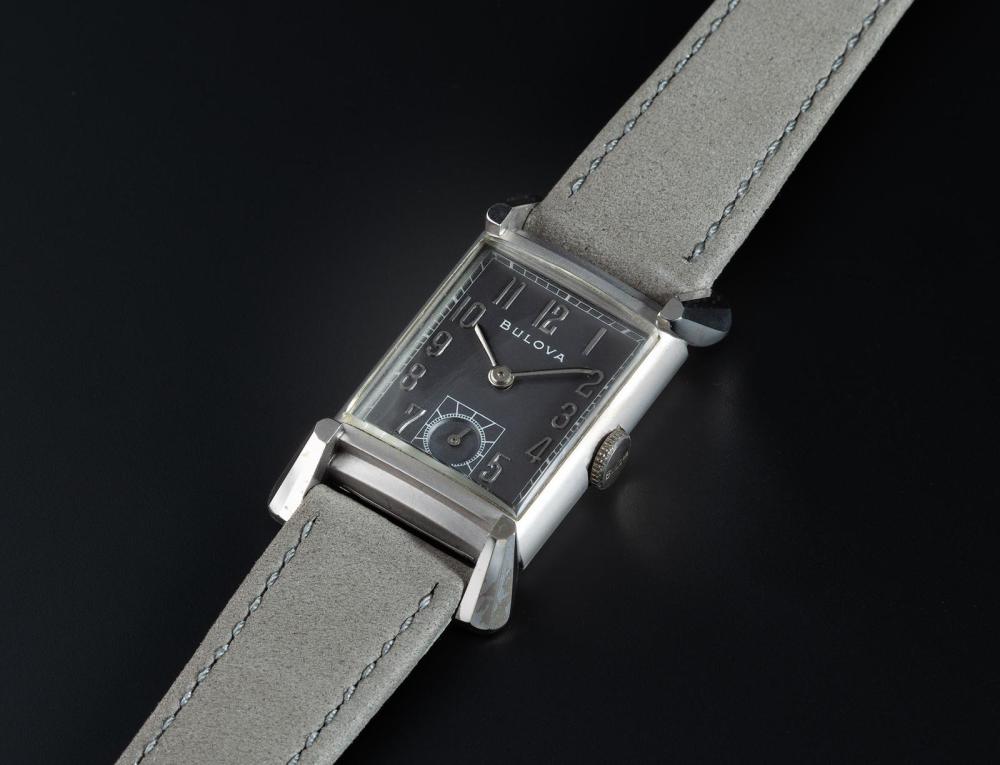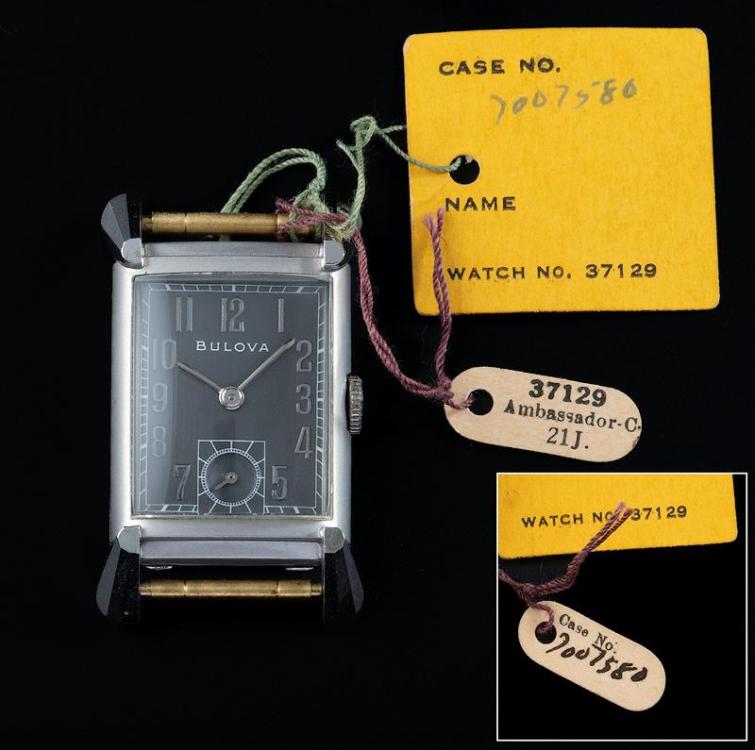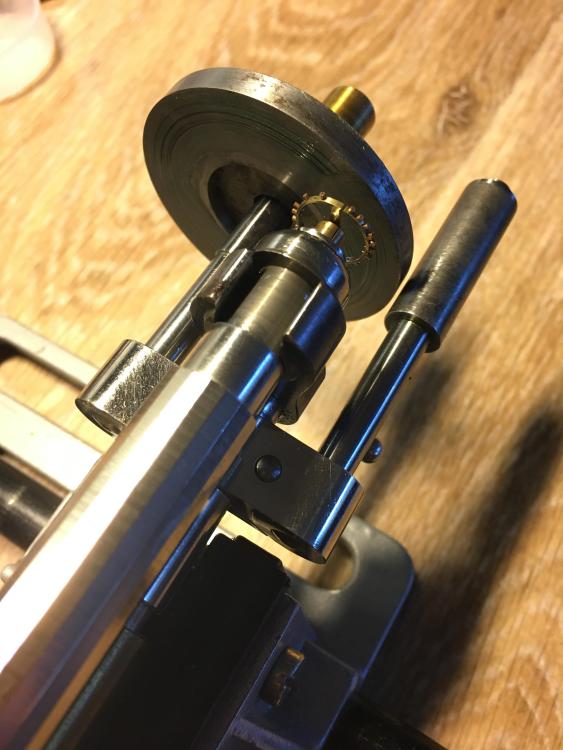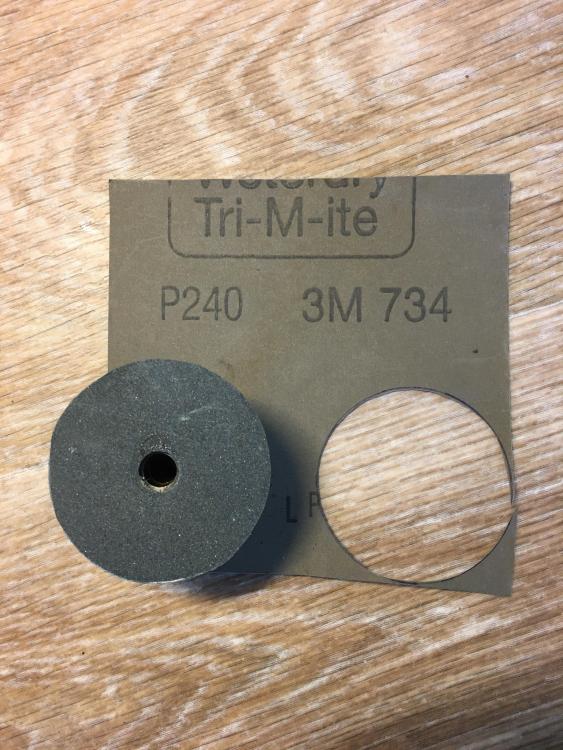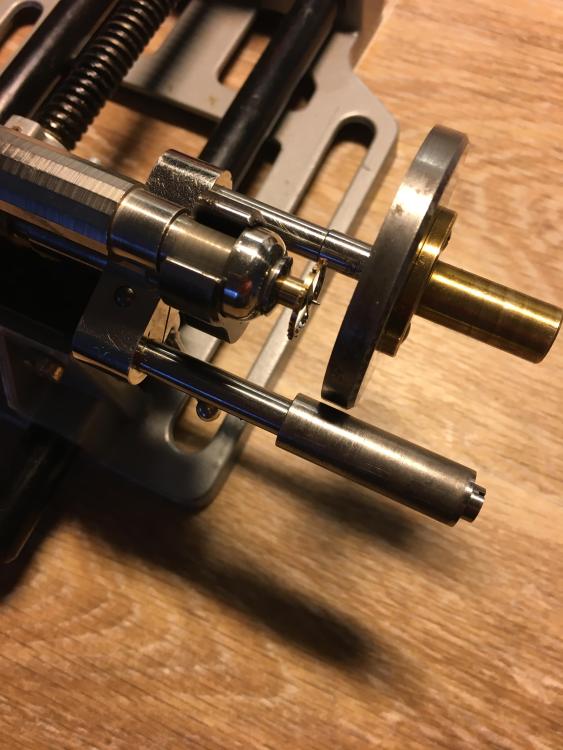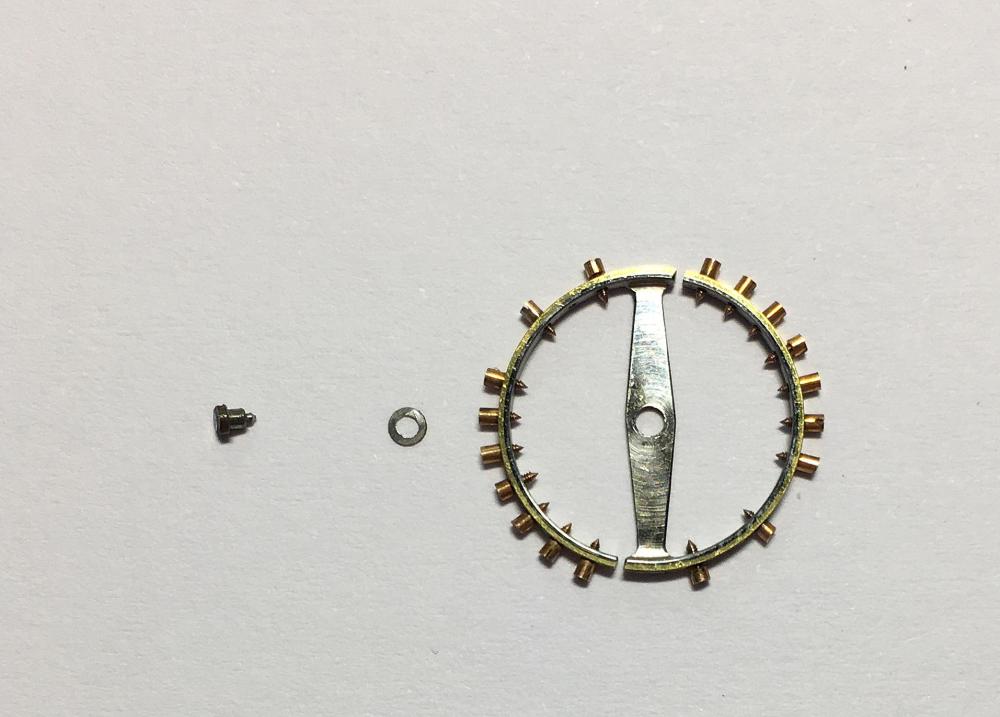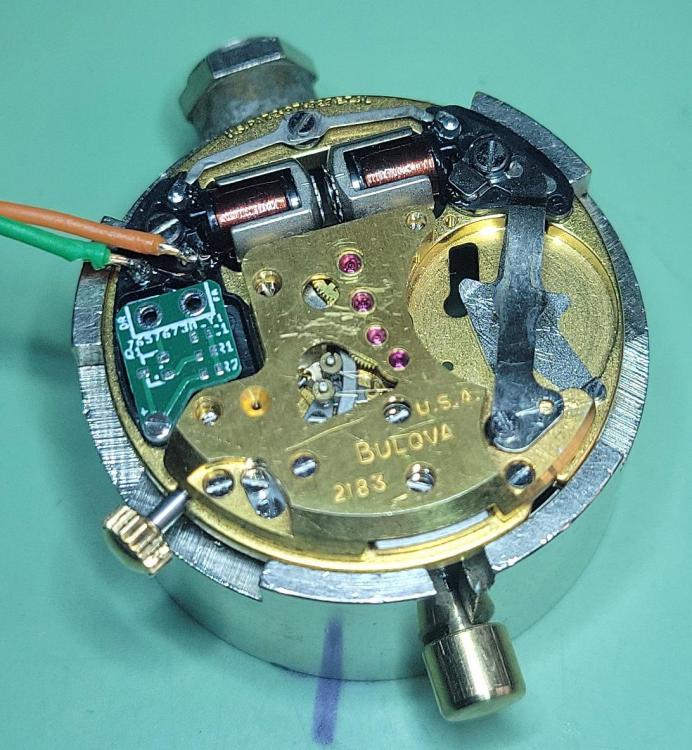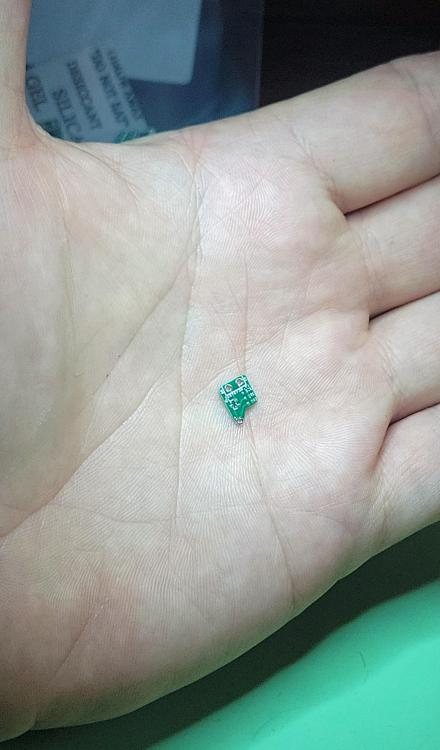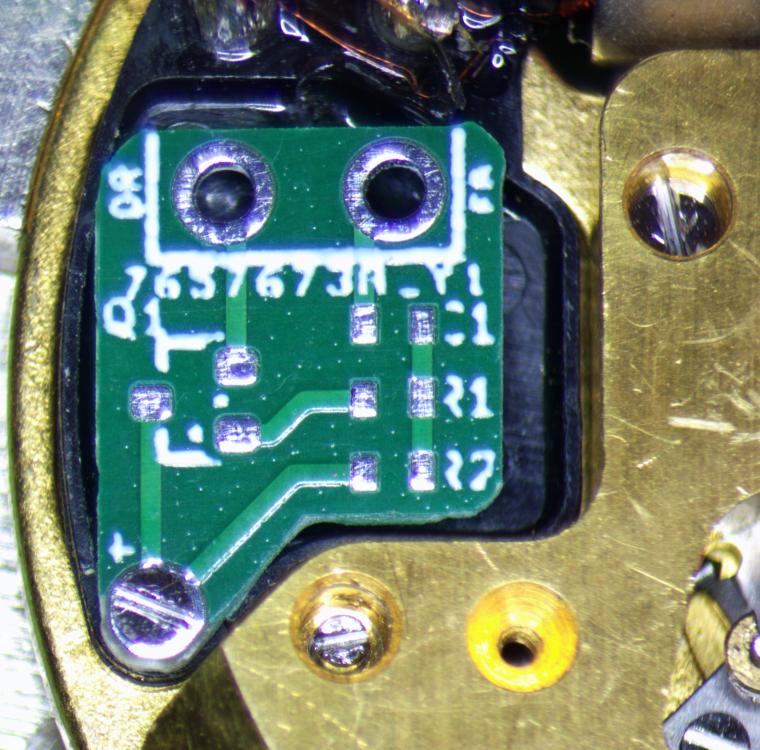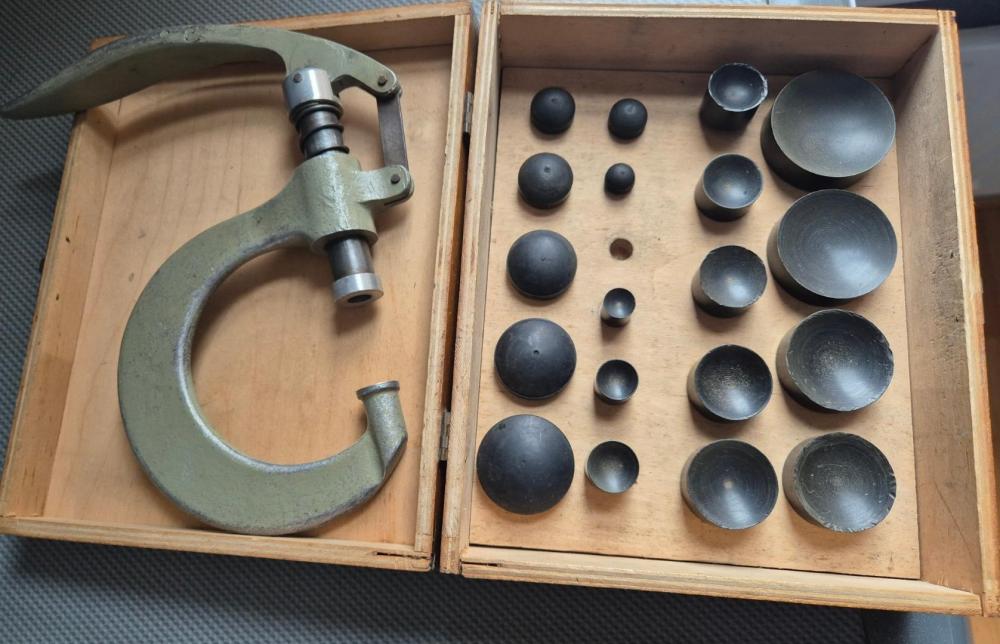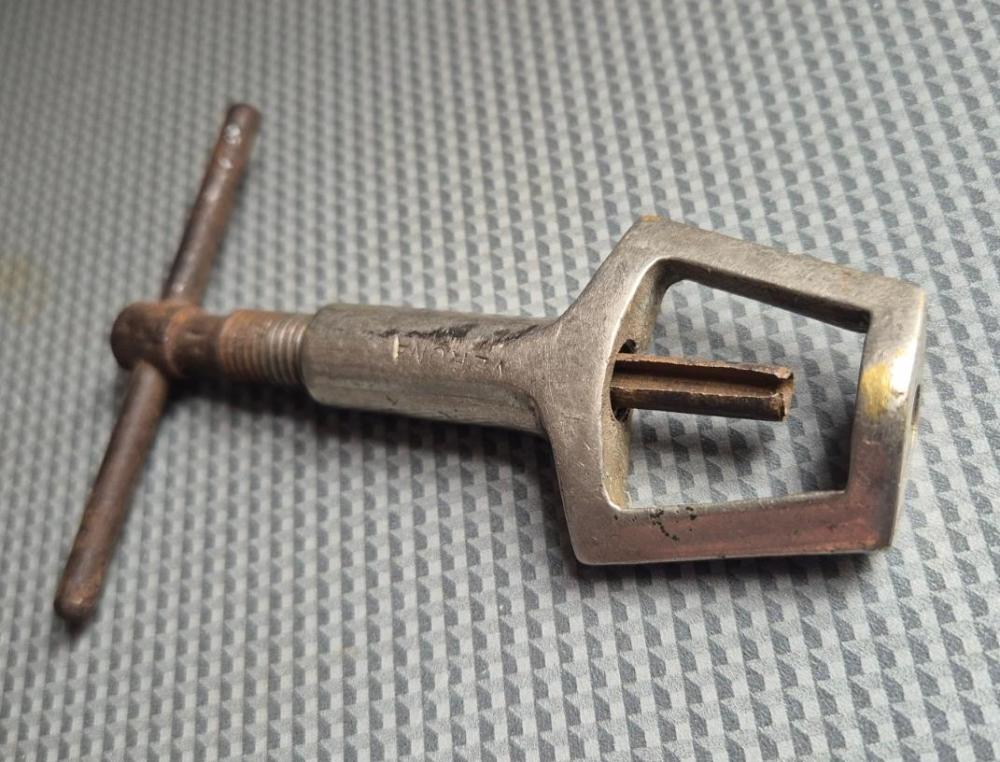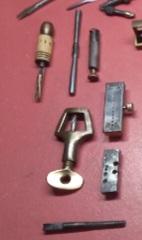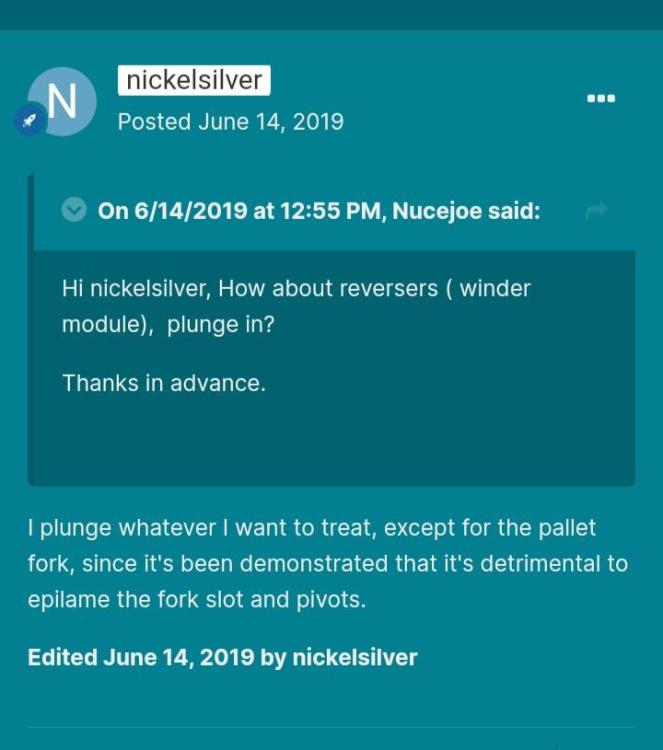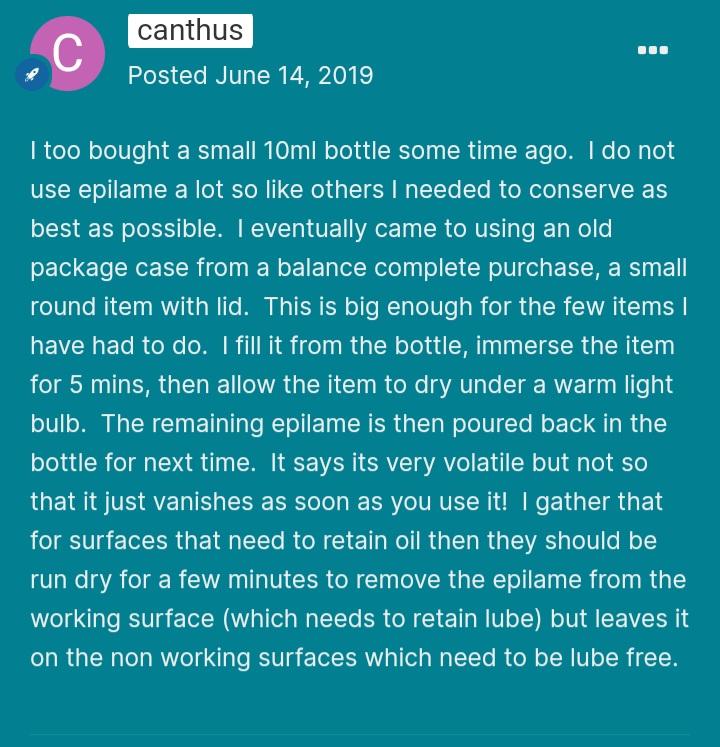Leaderboard
Popular Content
Showing content with the highest reputation on 04/27/24 in all areas
-
5 points
-
Picking up this side-tracked post again as I just removed a balance staff of a 1920's Omega (35,5L-T1) I was impressed by the way @Delgetti had his setup when he had to change out a balance-staff (https://www.watchrepairtalk.com/topic/28854-new-balance-staff-not-riveting-to-balance/page/2/#comment-244054 Not only that, but also the idea of removing the seat first before punching the staff out from the seat-side, avoiding the whole discussion of the rivet yes/no enlarging the hole. I didn't have the fancy clamps & tools Delgetti has, so I used my screw-head polishing tool. Initially I used #1500 grit diamond paste on the steel wheel, which kinda worked, but very slow. I changed to #800 grit diamond paste, which worked better, but still slow. Then I glued #240 sanding paper to the steel disk; That worked and the disk was hand-driven. Once close to the balance wheel, I took the sanding paper off and continued with #800 diamond paste. One can only do this when the balance wheel sits true on the staff and has no "wobble". I went on grinding until I saw some diamond paste on the rim of the balance wheel. This was as far as I could grind and it seemed that at that point there wasn't much left of the seat. Carefully, with my staking set, I knocked the staff from the seat-side out. Turns out that the thickness of the seat left, now a small ring, was only 0.1mm. The balance wheel hole is in perfect shape and no damage done to the wheel at all. Of course, if the wheel has a "wobble" or isn't seated true on the balance staff, you can't get as close and there will be more left of the seat. In my case, it worked perfect I'm very happy how this method worked out !3 points
-
3 points
-
As I'm only cleaning watches in small numbers at home, I pre-clean any significant deposits of old grease and oil before using the cleaning solutions. I scrape off deposits with pegwood and Rodico, and if really dirty, wash parts in naphtha with a brush. So I'm happy using DX, but can understand why it's avoided by the pros.2 points
-
2 points
-
1 point
-
It's a little circlip style retaining clip to keep the pinion from riding up out of position.1 point
-
Doctor, If the train turns when hands setting, this means that the train is not blocked. And this is true for all kinds of trains design. The train is normally blocked by the lever. So, put the lever in place and try again. If the train turns again, search where You have placed some wheel upside down and it is not meshed with the next one in the chain. The other thing is the amount of friction that is needed to overcome when setting hands. Yes, the friction part here is in the great wheel, and it needs lubrication. If the parts are dry, then friction will arise, seizing will happen and thus risk of breaking of teeth in the train or breaking of joint wheel/pinion. I don't know this calibre, but I guess the clip is part of the friction device. But for sure it stays tilted, which is not normal. So, pay attention to it and see what is wrong there1 point
-
1 point
-
one of the problems we have is visible versus invisible. For instance millennium disulfide another high pressure lubricant black in color. I was told by somebody worked for the Boeing company that they had a piston like device somewhere that has eight call it around it to grab it so it has to slide and in the collet has to grab. But if somebody puts that type of dry grease on where grease with that in it it embeds itself basically in the metal and they have to throw the whole part away they get use it all. So I suspect on all the dry powdery lubricants that they will go into all the basically microscopic cracks and crannies of the metaland that's where it is visually at least until you scrub it off your visually going to see it which is good because you want your lubrication the stay word is. But I'm sure it doesn't last forever on the metal it's just a really nice lubrication1 point
-
1 point
-
1 point
-
I think I've heard that more than from just Alex. That doesn't make it right though, but I'm convinced i saw some literature diagram explaining why to do that. There must be good info here in the archives, I'll have to have a dig around. Ok well i went through a good half of this thread and this is probably where i originally aquired the info.1 point
-
As far as I know, the only time an epilame treatment has potential drawbacks is when something is rubbing on the treated part w/o lubrication in between creating abrasive dust. That is, I don't believe in the method of "running the watch to make a groove through it first in the pallet stones where the lubrication is then placed". So, I think the rule would be; do not epilame treat parts where rubbing is going on without lubrication. Other than that I don't think we have anything to worry about. That said, I'm not an expert, and I'm always happy to learn more. Has any other repairer than Alex suggested or explained the "making-a-groove" method? My impression is that it's just something he constructed in his mind. I have not perceived it as a generally practiced method. Again, I could be wrong!1 point
-
1 point
-
Ive never used epilame H only information i have read and mentally stored about it mostly from Nicklesilver here and elsewhere ( the fork horns thing ), maybe the residue powder that is removed has some grinding effect ? So probably a good idea to limit its application areas to only the absolute necessary. Yes as far as i know epilame rubs off relatively easy, the technique of running the watch to make a groove through it first in the pallet stones where the lubrication is then placed. This i understand creates the barrier for the lube to sit up to. If i can find a good balance of pros and cons of its use then thats one process i can avoid by using a thixotropic lube on the stones. The epilame i would say allows for a more fluid lubrication to be used that would increase amplitude on low beat movements. The stearic acid powder is extremely cheap, the problem is the fuming process to coat parts, is not selective , the whole part has to treated in this method. If epilame residue can cause wear then thats not good, if I remember the conclusion was not proved entirely just a general assumption between watchmakers. The thread is out there somewhere, the same discussion is also old on a facebook group. Ive never used epilame H only information i have read and mentally stored about it mostly from Nicklesilver here and elsewhere ( the fork horns thing ), maybe the residue powder that is removed has some grinding effect ? So probably a good idea to limit its application areas to only the absolute necessary. Yes as far as i know epilame rubs off relatively easy, the technique of running the watch to make a groove through it first in the pallet stones where the lubrication is then placed. This i understand creates the barrier for the lube to sit up to. If i can find a good balance of pros and cons of its use then thats one process i can avoid by using a thixotropic lube on the stones. The epilame i would say allows for a more fluid lubrication to be used that would increase amplitude on low beat movements. The stearic acid powder is extremely cheap, the problem is the fuming process to coat parts, is not selective , the whole part has to treated in this method. If epilame residue can cause wear then thats not good, if I remember the conclusion was not proved entirely just a general assumption between watchmakers. The thread is out there somewhere, the same discussion is also old on a facebook group. If its a potential problem for amateurs to use then i would prefer not to take the risk .1 point
-
I’ve had a couple movements where it is clear the previous watchmaker was diligent with lubrication but the old epilam had turned to a fine white powder covering the pallet fork and keyless parts, which can’t be good for parts. I’m spare with epi since I don’t know how long it takes to degrade to that state…1 point
-
yes the things we read in the universe I did see some where it was either difficult to clean off or it contaminated the cleaning fluid there was some issue with cleaning. I was trying to remember something about grease where as opposed to a substance of a specific consistency they were suggesting it had a base oil with something to thicken it. That conceivably could indicate that the two could separate and that would be an issue. But there is something else going on here that I had remembered so I have a link below and the description of the 9501 notice the word that I highlighted? Notice that word appears quite a bit on this particular page like 9415 has that property all so they 8200 mainspring grease and that definitely has to be mixed up when you go to use it because it definitely separates. just in case you didn't remember that nifty word there is a Wikipedia entry. https://en.wikipedia.org/wiki/Thixotropy https://www.moebius-lubricants.ch/en/products/greases I wonder if what you're seeing is the boron nitride left behind after cleaning. In other words it's the high-pressure part of the grease and it's probably embedding itself into the metal which is why it doesn't clean off and shouldn't be a problem?1 point
-
I've used expanding foam for lots of things but i thinķ you got me on that one.1 point
-
Put the arbor in the barrel in the correct direction and look at the hook of the arbor. It will show You the direction of the spring.1 point
-
1 point
-
Two pins or screwdrivers angled out slightly, pressing through from the barrel centre from the opposite side so they contact just clear of the hole in the lid? eg. Strap pin driver needles or similar.1 point
-
Glue a nut to the barrel lid, insert a bolt, pull, disolve the glue. Maybe someone will have a better answer.1 point





